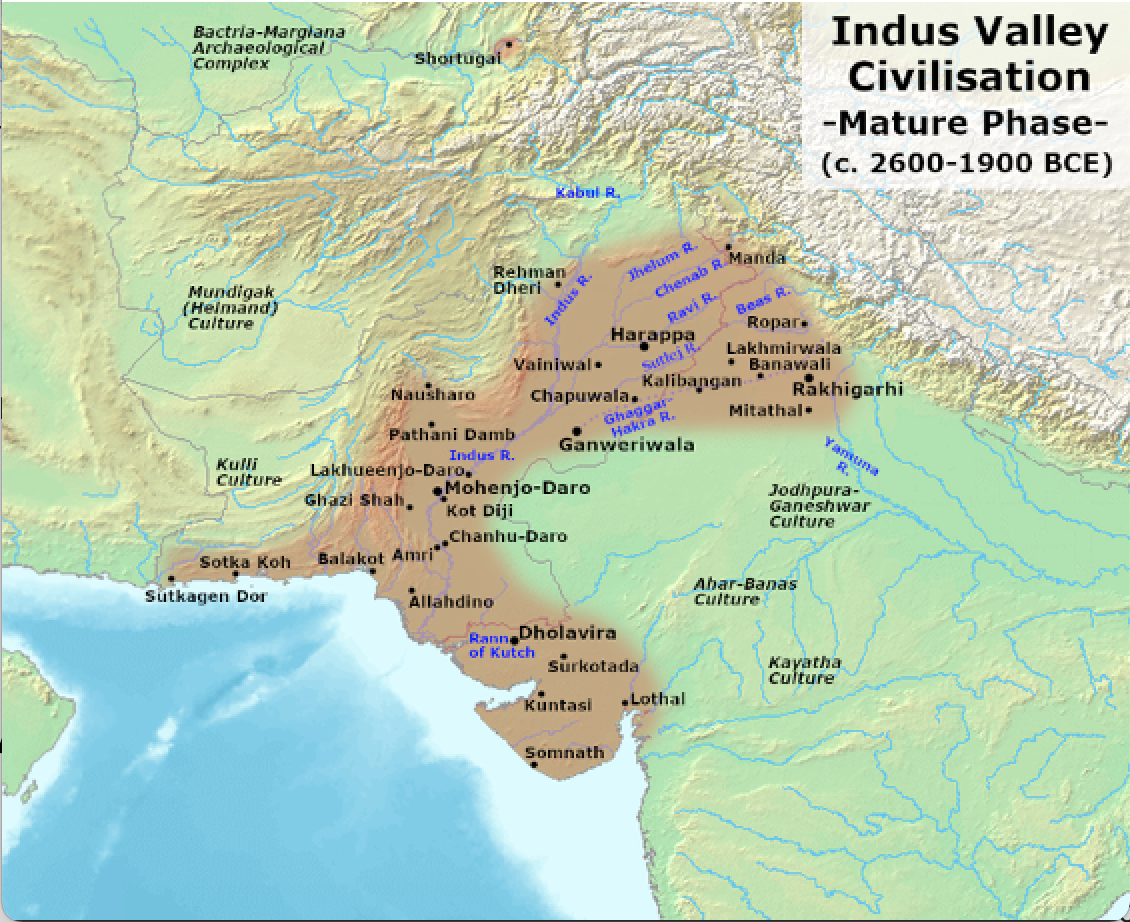Matthew G. Marsh
Dating back to approximately 3500 BCE in its earliest phase, the timeframe for the mature phase of the Indus Valley Civilization ranges from approximately 2700 BCE to 1900 BCE, making it contemporary with the Early Dynastic II-III, Akkadian, and Ur III periods of Mesopotamian Civilization. Perhaps the largest of the ancient centers of civilization, the Indus Valley Civilization covered an area of more than 800,000 square miles, which is comparable to a land area the size of Alaska and Texas combined (fig. 2).
Figure 2. Indus Valley Civilization, Mature Phase (2600-1900 BCE); CC BY-SA 3.0 license.
As its name suggests, the Indus Valley Civilization was an urban civilization of the plains, based around the Indus river and its tributaries, whose economic foundations were based upon agriculture, production of goods, and trade. Much like the Nile River in Egypt, the Indus River provided the fertile soil necessary to grow crops through the annual flooding of the river. However, the defining characteristic of the Indus Valley Civilization was its cities. Unlike the cities of Mesopotamia, Egypt, or ancient China, which developed and grew organically, those of the Indus Valley Civilization are distinguished by a uniform system of town planning. Indus cities are laid out on a grid system, with roads cutting across each other at right angles, creating large city blocks. The larger cities, such as Harappa and Mohenjo-Daro, have a citadel or acropolis that was possibly occupied by members of the ruling class.[1] A detailed political history of the Indus Valley Civilization is at this time impossible to chart, since we have not yet deciphered the Indus writing system. It is a historical irony that even though the Indus Valley Civilization was a literate one, we are entirely dependent on archaeological remains for insight into its history.
[1]. Antonova et al., History of Ancient India, 16–19; Chopra et al., Comprehensive History, 8–13; Dani and Thapar, “The Indus Civilization,” 271–75; Habib, The Indus Civilization, 13–16, 22–24; Jha, Early India, 28–31; Jha, Ancient India, 30–32; Mehta and Mehta, History of Ancient India, 90–92; Pusalker, “The Indus Valley Civilization,” 195–96; and Sharma, India’s Ancient Past, 75–76.


